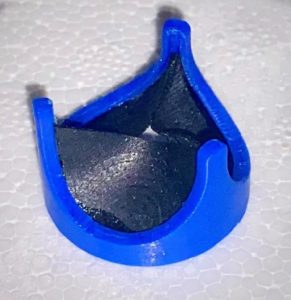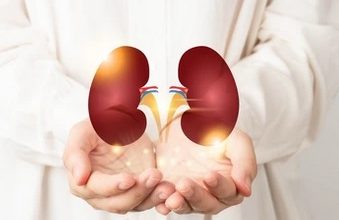A working prototype of the new 3D printed heart valve

Dr Sanjay Cherian, Vice President and Cardiac surgeon at Frontier Lifeline Hospitals, explains the importance of 3D printed heart valves and introduces the scientific innovation
Heart valves are crucial as they allow blood to flow only in one direction so that the blood is pumped as valves open and shut with each beat of the heart. Valves are one-way doors, allowing blood to flow forward. In the human body, there are four valves; two valves located between the atria and ventricles, the tricuspid and mitral valves, are known as atrioventricular valves. The other two valves the pulmonary and aortic, are called semilunar valves, because each of those valves has leaflets that are shaped like half-moons.
When these valves do not function as intended the heart function gets affected and the valves need to be replaced. Sometimes the valve opening is smaller than normal due to stiff or fused leaflets while some valves are damaged and do not close tightly such that blood flows backwards.Valvular heart disease (VHD) incidence is rising in India and the number of valve replacements have also gone up in the recent years. The currently available artificial heart valves are either made of metal components (mechanical), or from animal tissues (bioprosthetic), each with its disadvantages / complications, such as the risk of blood clot formation, valve failure due to degeneration, valve infection, the need for long-term blood thinner medications, etc.
Scope of 3D-Printed Valve
With the recent advances in technology and research-led innovation, the scope of using 3D printing to design new heart valves that could overcome these problems related to artificial heart valves, was proposed by Chennai-based heart surgeon, Dr Sanjay Cherian.
“We have been doing extensive research on the concept of 3D printing in the field of Medicine. Earlier, 3D printing was used to plan the surgical approach, especially for complex procedures, to help cardiac surgeons and cardiologists to navigate and choose the best approach to treat heart diseases. This time, we focussed our efforts on using 3D printers to manufacture heart valves using specialised biopolymers that are very similar to human tissue, which can be directly implanted in heart patients,” Dr Cherian explained.
Innovation at its Best
A working prototype of the new 3D printed heart valve was displayed by Dr Cherian recently during a press conference. “This new 3D printed heart valve could be the future of cardiac surgery, since it overcomes most of the disadvantages and complications associated with the currently available artificial heart valves that are in use today,” he said.
“Another added advantage of this 3D printed heart valve is that its design was developed using specialised computer-aided design software and modelling techniques, based on the MRI scan images of the human heart, as a result of which, we are now able to customise and 3D print heart valves that will fit exactly to the dimensions of the patient’s heart,” said Dr Cherian. This scientific innovation is a giant leap in the field of cardiac surgery, and was undertaken in collaboration with the Centre for Automation and School of Mechanical Engineering, Vellore Institute of Technology (VIT), Chennai. The team is in the process of patenting this 3D printed heart valve, and testing it to confirm its bio-compatibility, efficacy and durability. When it will be available in the market the cost of this novel heart valve could be much lower than that of the imported heart valves that are currently used in India.
What is the 3D printed valve made of?
This novel heart valve is made of a new specialised bio-polymer that is very similar to human tissue. The exact composition of materials cannot be disclosed at the moment, since the patent process is going on but once the product is patented, we can disclose the details.
What equipment was used for the same?
We used proprietary 3D printing machine. Besides, MRI scan images of the patient’s heart and heart valves were taken after which the new heart valve was made by using special 3D printing techniques including a DLP-based photo polymerization technology and fused deposition modelling (FDM) technique.
What are the current options to replace heart valves?
Now there are two types of valves, either a mechanical valve which is made of metal components or there are tissue valves (bio-prosthetic valves) which are made from animal tissues. Since it is made from bio polymers, hence does not have any of these complications. This new 3D printed valve is different from both these valves. Patients have to be on long-term blood thinner medications and these valves can get stuck or eventually torn in at approximately 10 years.
How is your 3D printed valve better?
This can be customised to get the exact size for each patient. The valve is made of biological tissue and there may not be a need for long-term blood thinner medicines may not be required and it is not from any form of animal tissue. The valves that are currently available are imported from other countries and is expensive. In India, 3D printed valves can be much cheaper and easily affordable to the common man.
By when can this be used in human?
Currently, testing is going on for confirming the biocompatibility, strength and the flow in the valve, following which animal study will be undertaken and following this, we can go for clinical trials. It may be for approximately six months to one year before we officially commercialise this product.





